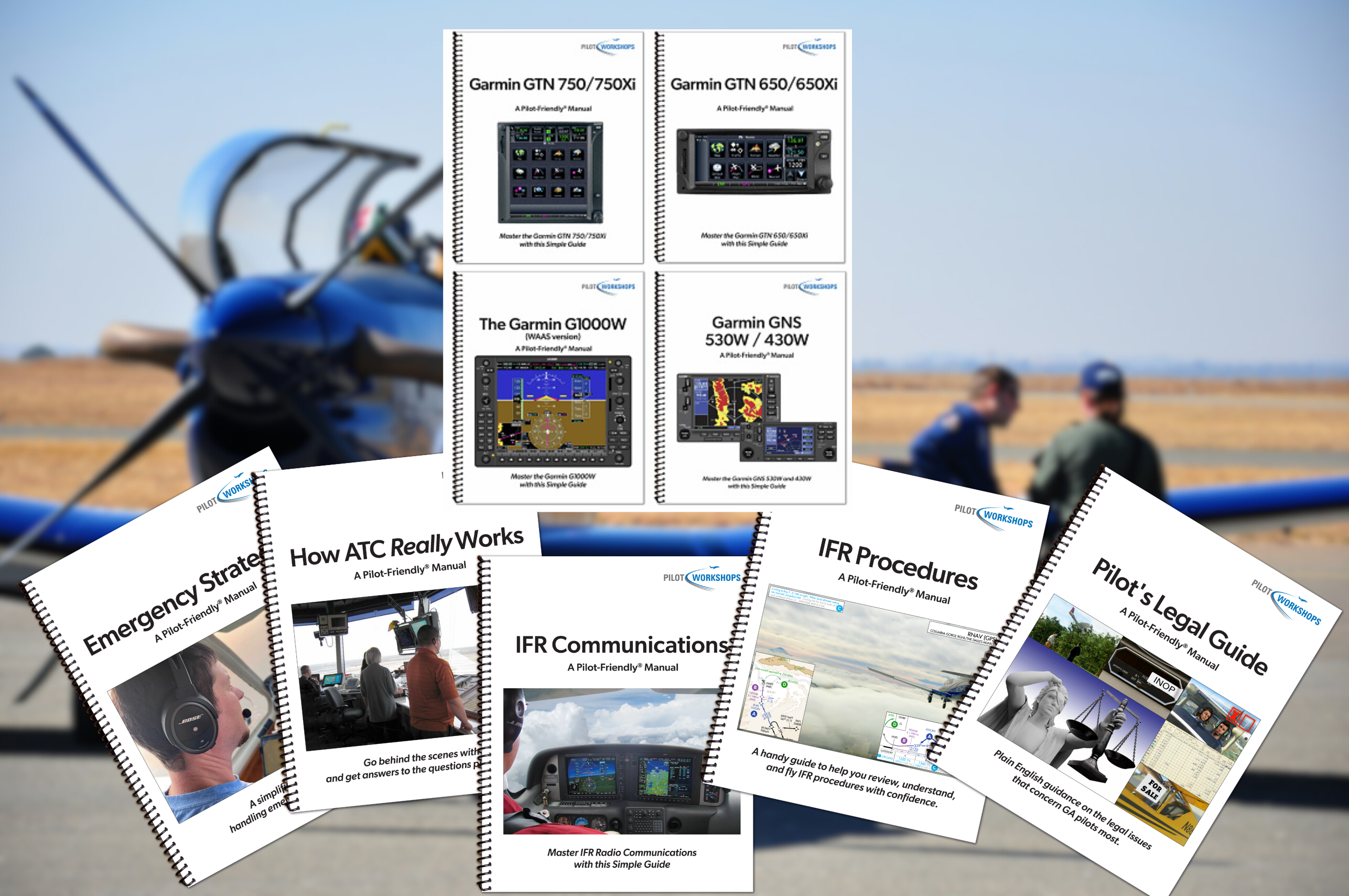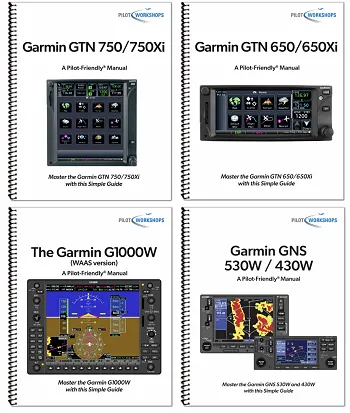As a general aviation pilot, it is essential that you continually sharpen your skills to stay safe in the cockpit. The training materials from PilotWorkshops.com are among the most comprehensive around. Since 2005, their team of award-winning instructors has built an online training portfolio that includes monthly scenario-based VFR and IFR workshops plus an extensive library of “pilot-friendly” manuals—all designed to help pilots at every level raise their standard of proficiency. With over 200,000 pilots having relied on these resources, PilotWorkshops offers a strong foundation in decision-making, technique, and real-world flying skills.
Practical Knowledge Made Simple
For pilots who prefer hands-on learning and clear, actionable guidance, the Pilot-Friendly Manuals from PilotWorkshops have become a go-to resource. Developed by a team of FAA-recognized instructors, these manuals translate complex flying concepts into step-by-step techniques that any pilot can understand and apply in real-world flying. With their signature blend of plain-language explanations, full-color diagrams, and practical examples, they make it easy to refresh knowledge, reinforce best practices, and improve cockpit performance.
Built for Real-World Flying
Each manual focuses on a specific area of flight proficiency, turning challenging or easily overlooked topics into manageable skill sets. Whether it’s mastering IFR procedures, improving radio communications, or refining your weather decision-making, PilotWorkshops’ manuals deliver clarity and confidence where it matters most—at altitude.
The manuals below from PilotWorkshops are highly recommended for your consideration as you refine your piloting skills.
Please note: We are not an affiliate of PilotWorkshops.com and do not earn from qualifying purchases.
Emergency Strategies

Emergency Strategies
A simplified approach to handling emergencies in an airplane.
This 129-page, full-color manual from PilotWorkshops delivers a scenario-based, pilot-centric approach to handling in-flight emergencies. Rather than merely reciting checklists, it groups emergencies into 11 categories (such as power loss, fire, flight control malfunctions, instrument failure, landing complications and more) and walks you through what to think, what to do, and what mindset to adopt when every second counts.
Key features include:
- Illustrated step-by-step breakdowns for major emergency types.
- Real-world examples + “pro tips” to sharpen your decision-making under pressure.
- Designed for use on an iPad (PDF) or as a spiral-bound printed manual—so it fits in your flight bag or EFB app.
- Designed to supplement (not replace) your POH and checklists—giving you a framework to handle both familiar and unexpected emergencies.
- 90-day money-back guarantee.
Ideal for: Private pilots, commercial pilots, CFI’s and any aviator who wants to deepen their emergency-handling proficiency beyond rote memory—to build flexible, effective response skills when things go wrong.
How ATC Really Works

How ATC Really Works
Go behind the scenes with ATC and get answers to the questions pilots ask most.
This 127-page, full-color manual from PilotWorkshops takes you behind the scenes of the air-traffic-control world—designed specifically for pilots who want to understand not just what controllers say, but why they say it.
Key features:
- Illustrated with color photographs, graphics and realistic scenarios to simplify complex ATC processes.
- Clear Q&A style format addressing the most common questions pilots have about towers, TRACONs, Centers, radar, weather, IFR/VFR operations and more.
- Covers topics such as how controllers are trained, how the ATC system is structured, what happens when you file a flight plan, how to communicate effectively with ATC, and how to handle special requests and emergencies.
- Available in digital PDF (optimized for iPad) or as a spiral-bound printed version for your flight bag—plus a 90-day money-back guarantee.
Why this manual is valuable:
Understanding how ATC operates—from their perspectives, constraints and tools—helps you anticipate clearer instructions, formulate smarter requests, and communicate more efficiently. If you’ve ever wondered what goes on behind your radio calls, this manual gives you the insights to make your turn-to-final smoother, your IFR flight more predictable, and your VFR clearance more strategic.
VFR Communications
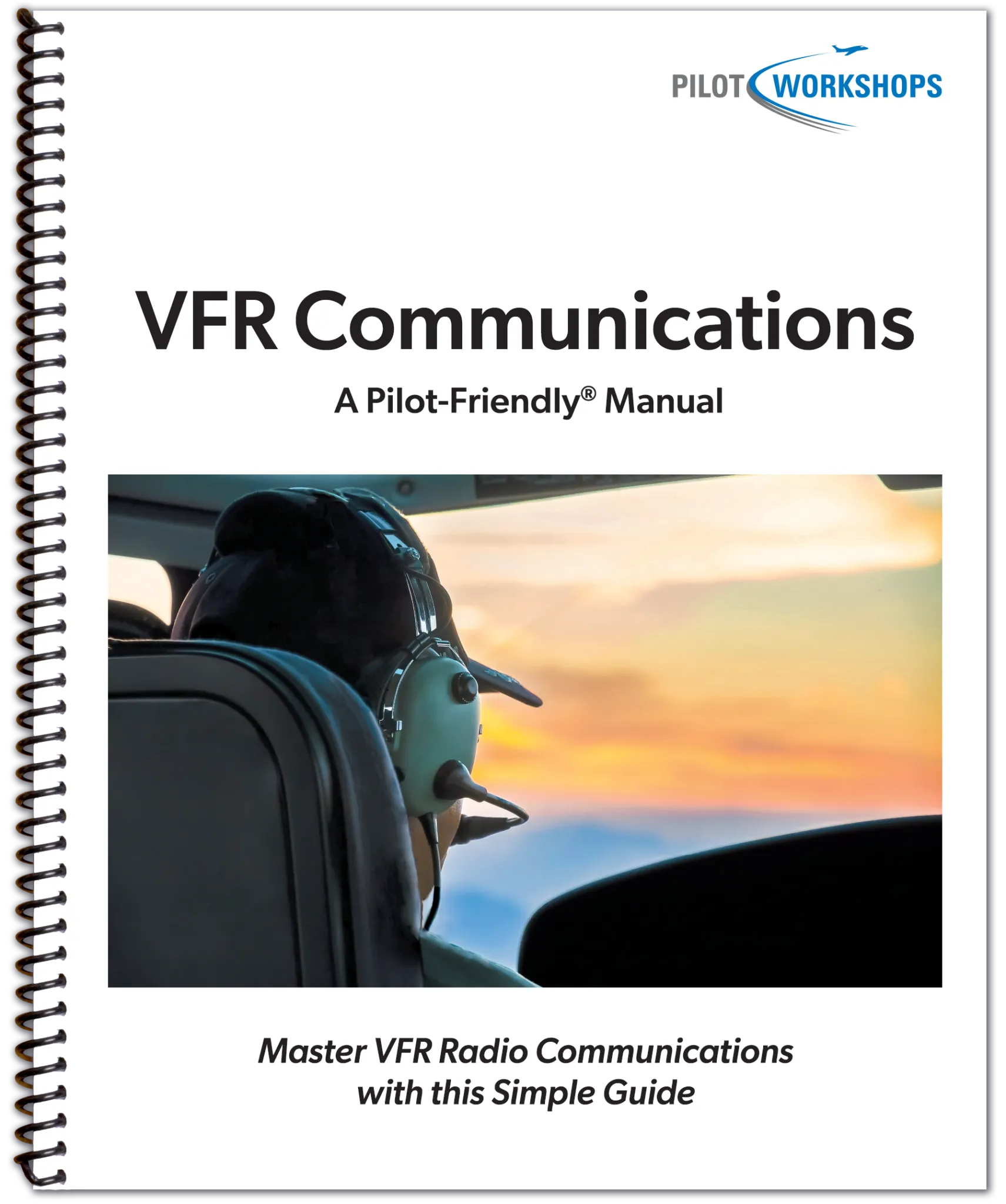
VFR Communications
Shows you exactly what to say, and when to say it. Includes bonus videos to see and hear every radio call in action.
Master VFR radio communications with this clear, actionable guide from PilotWorkshops. The manual uses a task-oriented format to walk you through what to say, when and where in all common VFR flight situations.
Key features include:
- AIM- and FAA-approved phraseology alongside the real-world language you'll actually hear.
- Fully illustrated with airspace and airport diagrams to help you visualize radio communications in context.
- Organized by flight phase (ramp/taxi, departure, enroute, arrival) with ready-to-use scripts.
- Access to 53 supporting video demonstrations so you can both see and hear how the calls work.
- Available as a digital PDF (ideal for iPad/EFB) and a spiral-bound printed version designed for the cockpit.
Ideal for student pilots learning radio procedure, experienced aviators looking to refresh or sharpen their skills, and CFIs teaching proper phraseology. By the end, you’ll feel more confident, avoid “mic-fright”, and communicate clearly and effectively on the airwaves.
IFR Communications
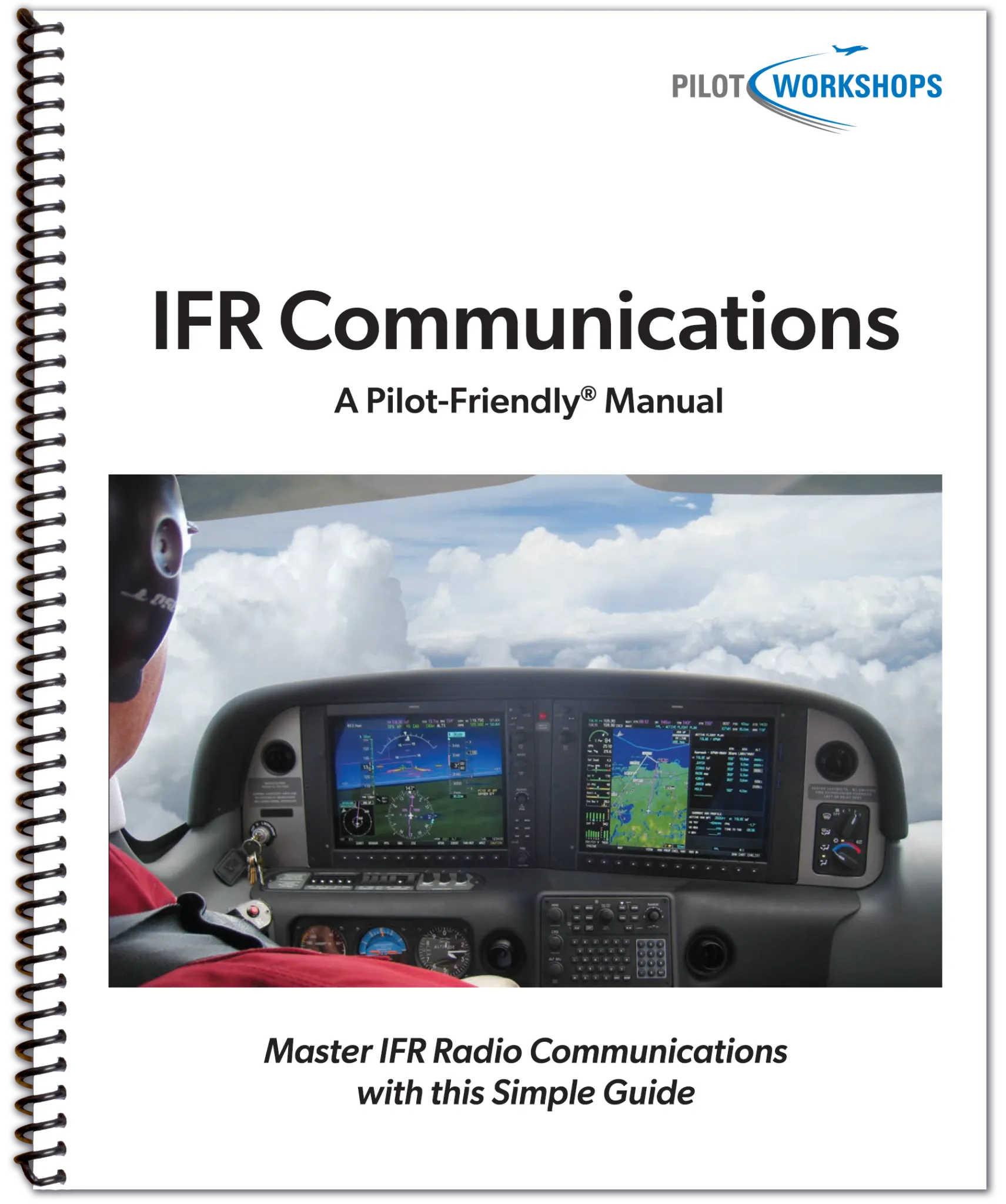
IFR Communications
Provides scripts of the most common, most useful, and most critical IFR radio communications.
Master the radio calls you’ll use in instrument flight with this clear, practical guide from PilotWorkshops.
Product overview:
- Organized by task (e.g., filing a flight plan, requesting a clearance, contacting new controllers) to guide you through the 80-plus most common IFR communications.
- Designed for instrument-rated pilots or those working toward an instrument rating who want to build fluency and confidence in radio procedures.
- Available in digital (PDF) or printed spiral-bound format, making it easy to access in the cockpit or on your iPad.
- Includes demonstration videos to accompany the manual and show real-world transmissions in context.
Why it’s valuable:
If you’ve ever found yourself wondering what exactly to say on the radio, especially under IFR, this manual gives you a structured reference in a task-based format—helping reduce hesitation, improve phraseology, and streamline your communications with ATC. Whether you’re brushing up or aiming to fly more confidently under IFR, this guide has you covered.
IFR Procedures
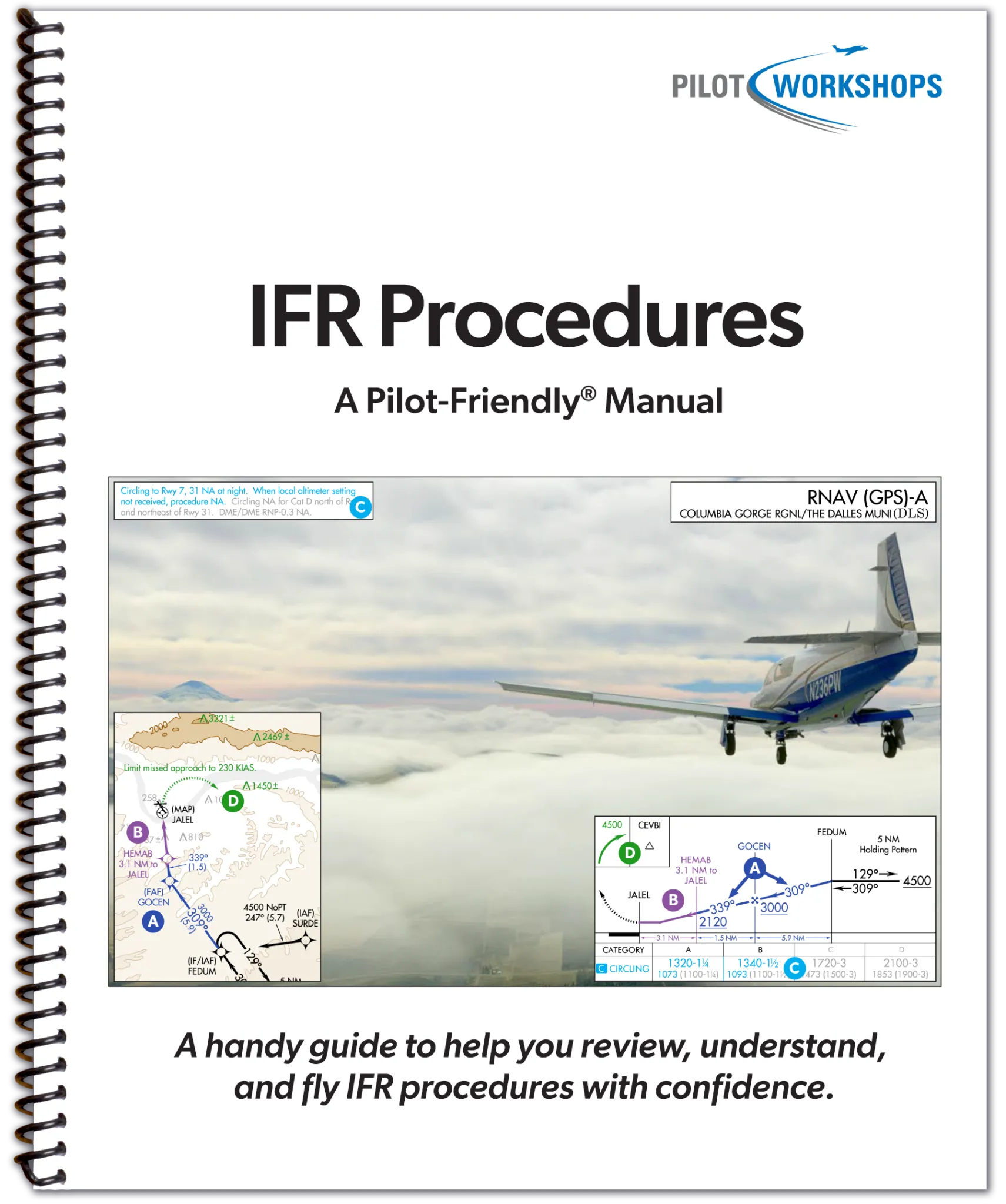
IFR Procedures
A handy guide to help you review, understand, and fly IFR procedures with confidence.
This full-color, 144-page manual is tailored for instrument-rated pilots or those working toward an instrument rating, designed to help you review, understand, and confidently fly IFR procedures.
Key features include:
- A task-oriented format that breaks each IFR procedure into individual steps—giving you clear explanations, real-world examples and pilot-pro tips.
- Coverage of every phase of IFR flight: clearances, departures, en-route, arrivals, approaches, unusual cases, and post-flight actions.
- Available as a digital PDF (optimized for iPad/EFB use) and as a spiral-bound printed manual for easy cockpit reference.
- Ideal for brushing up on IFR knowledge, filling gaps in proficiency, or refreshing your understanding of the IFR system—though it is not intended to replace an IFR ground school.
Why it’s valuable:
If you’re instrument-rated and want a practical, structured tool to deepen your understanding of IFR flight, this manual gives you a framework to break down complex procedures into manageable tasks—helping you fly with greater clarity and confidence.
Pilot Exercise Program

Pilot Exercise Program
15 in-flight exercises designed to improve flying skills while creating a fun, “scoreable” challenge.
Pilot Exercise Program — A Pilot-Friendly Manual
Elevate your stick-and-rudder skills with this dynamic manual from PilotWorkshops, designed for pilots of all levels. It features 15 in-flight exercises grouped into five skill-areas: take-offs & landings, rudder control, edge-of-envelope flying, advanced airmanship, and emergency preparedness.
Highlights:
- Step-by-step instructions with full-color photos and illustrations to guide each exercise.
- Scoresheets included so you can track your performance and improvement over time.
- Digital PDF optimized for iPad/EFB use and a spiral-bound printed manual option for easy cockpit reference.
- Video demonstrations of each exercise help you visualize what to aim for.
Why it’s valuable:
Whether you’re a new pilot looking to build solid fundamentals or an experienced aviator working to stay sharp and eliminate bad habits, this manual offers purposeful, enjoyable challenges that make your flights productive—not just routine. As the publisher puts it: “The real objective is to experience something new, and then use that experience to improve your overall flying skills.”
Pilot's Legal Guide
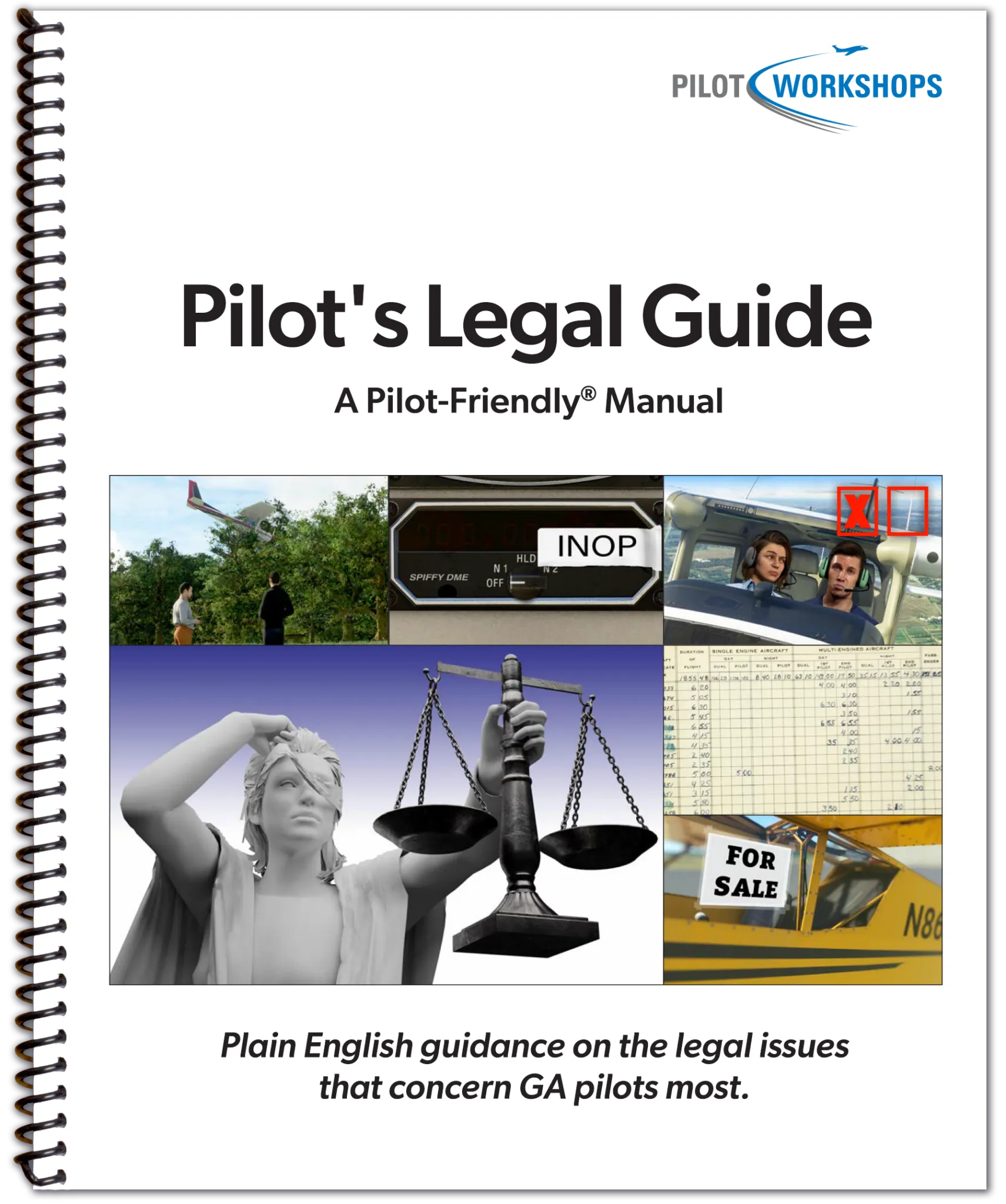
Pilot's Legal Guide
Plain English guidance on the legal issues that concern GA pilots most.
Navigate the legal landscape of general aviation with confidence. This 115-page full-color manual delivers plain-English guidance on the complex regulations, interpretations, and legal scenarios that affect GA pilots most.
Key features:
- Question-and-answer format making difficult legal issues easier to digest.
- Real-world examples covering topics such as cost sharing, logging time, declaring emergencies, maintenance obligations and ownership matters.
- Digital PDF (optimized for iPad/EFB use) and optional spiral-bound print version.
- Audiobook format included for on-the-go listening.
Why it’s valuable:
Whether you’re a new private pilot, owner-operator, CFI, or just want to stay out of regulatory trouble, this manual gives you the “why” behind the rules. It helps you make better decisions, understand what the Federal Aviation Administration is really looking for, and avoid common pitfalls that many pilots don’t even realize exist.
Master Your Garmin Navigation Systems
These task-oriented manuals provide clear, pilot-friendly instruction for Garmin’s avionics systems — including the GTN 650/750 series, GNS 430/530 series and the G1000 system. Rather than simply listing what each button does, these guides walk you step-by-step through real-world procedures (e.g., filing a flight plan, executing approaches, switching nav sources) so you can use your system efficiently under pressure.
Highlights:
- Each manual uses a task-based format: open to the procedure you need and follow numbered steps to complete it.
- Fully illustrated with diagrams and examples to help you visualize what to do and when.
- Available as a downloadable PDF optimized for iPad/EFB use, and optionally as a spiral-bound printed edition for your flight bag.
- Covers multiple levels of pilot proficiency: whether you’re new to the system, have it installed but aren’t getting full value, or are experienced and looking to refine your workflow.
Why it’s valuable:
Instead of wading through the dense manufacturer manual, you get a focused reference built by experienced CFIs based on how pilots actually fly. That means less “button hunting” in flight and more confidence in executing the right navigation strategy when time is critical.
Here’s a breakdown of the specific models covered in the Garmin-GPS manual collection from Garmin as published by PilotWorkshops, including details on coverage and features:
- Garmin GTN 650/650Xi: A dedicated manual is offered for this unit ~50 pages (full color).
- Garmin GTN 750/750Xi: Separate manual available for this model as well ~52 pages (full color).
- Garmin GNS 430W/530W: A combined manual covers both WAAS-enabled GNS 430 and GNS 530 units ~138 pages (black & white version).
- Garmin G1000W: Manual available for the WAAS version of the Garmin G1000 integrated avionics suite ~85 pages (black & white in listing).

